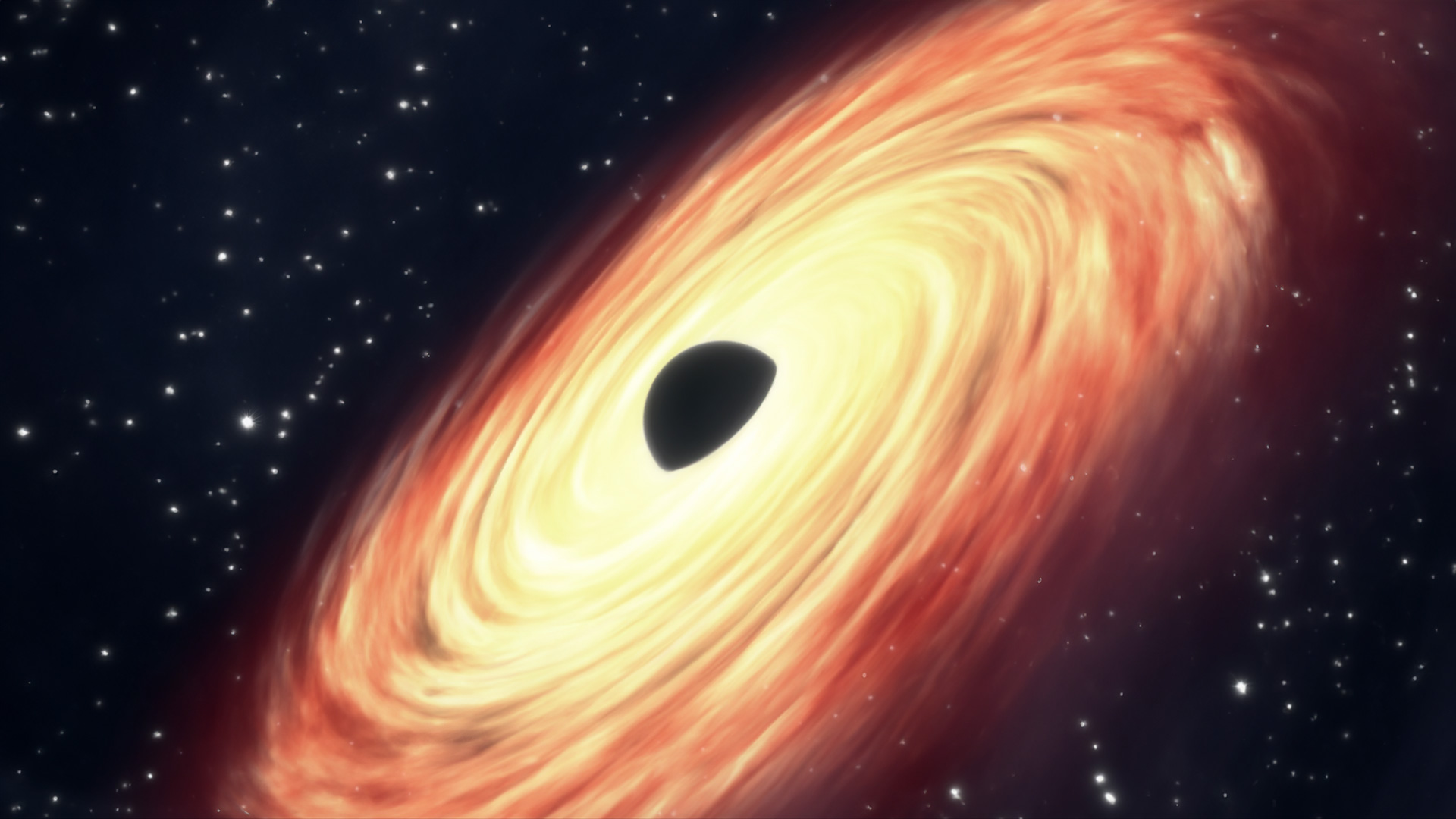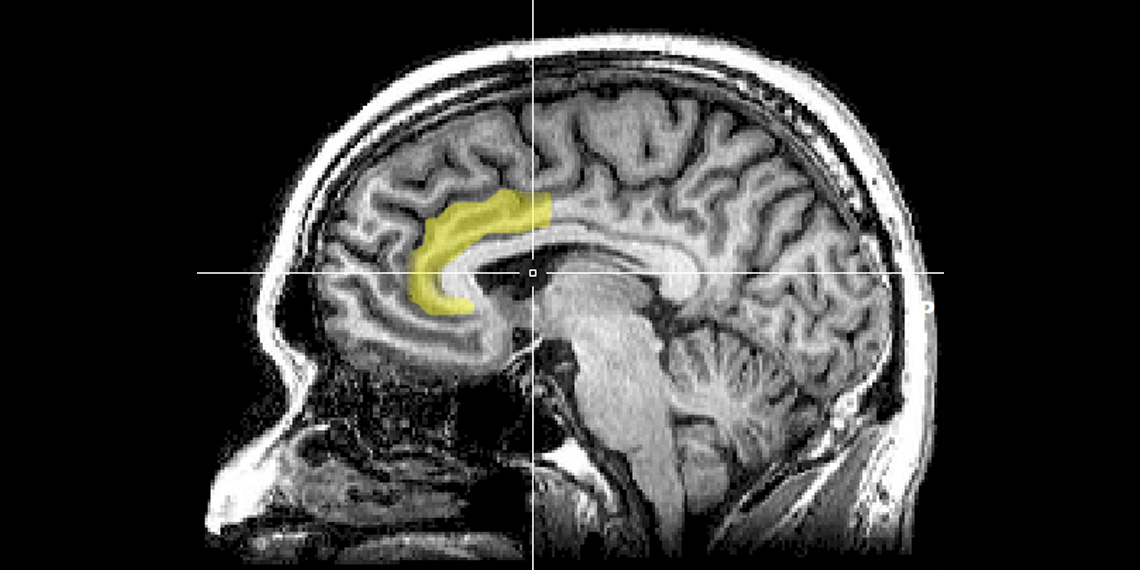Astronomers have discovered the most distant black hole ever observed in X-rays, located in galaxy UHZ1, over 13 billion light-years away. Using data from the Chandra X-ray Observatory and the James Webb Space Telescope, the findings suggest the black hole was massive at birth, challenging current theories about the early universe’s supermassive black holes. Credit: NASA
- A key indicator of a growing supermassive black hole – X-ray emission – has been found in an extremely distant galaxy.
- This galaxy, UHZ1, is 13.2 billion light-years away, seen when the universe was only 3% of its current age.
- NASA’s Chandra X-ray Observatory and James Webb Space Telescope joined forces to make this discovery.
- This is considered the best evidence to date that some early black holes formed from massive clouds of gas.

Astronomers found the most distant black hole ever detected in X-rays (in a galaxy dubbed UHZ1) using the Chandra and Webb space telescopes. X-ray emission is a telltale signature of a growing supermassive black hole. This result may explain how some of the first supermassive black holes in the universe formed. These images show the galaxy cluster Abell 2744 that UHZ1 is located behind, in X-rays from Chandra and infrared data from Webb, as well as close-ups of the black hole host galaxy UHZ1. Credit: X-ray: NASA/CXC/SAO/Ákos Bogdán; Infrared: NASA/ESA/CSA/STScI; Image Processing: NASA/CXC/SAO/L. Frattare & K. Arcand
NASA Telescopes Discover Record-Breaking Black Hole
This image reveals the most remote black hole ever identified through X-rays, potentially shedding light on the formation of the earliest supermassive black holes in the cosmos. This discovery was made using X-rays from NASA’s Chandra X-ray Observatory (depicted in purple) and infrared data from the James Webb Space Telescope (shown in red, green, blue).
Galactic Distances and Observations
The extremely distant black hole is located in the galaxy UHZ1 in the direction of the galaxy cluster Abell 2744. The galaxy cluster is about 3.5 billion light-years from Earth. Webb data, however, reveal that UHZ1 is much farther away than Abell 2744. At some 13.2 billion light-years away, UHZ1 is seen when the universe was only 3% of its current age.
Gravitational Lensing and X-ray Detection
By using over two weeks of observations from Chandra, researchers were able to detect X-ray emission from UHZ1 — a telltale signature of a growing supermassive black hole in the center of the galaxy. The X-ray signal is extremely faint and Chandra was only able to detect it — even with this long observation — because of the phenomenon known as gravitational lensing that enhanced the signal by a factor of four.
Imaging Techniques and Orientation
The purple parts of the image show X-rays from large amounts of hot gas in Abell 2744. The infrared image shows hundreds of galaxies in the cluster, along with a few foreground stars. The insets zoom into a small area centered on UHZ1. The small object in the Webb image is the distant galaxy UHZ1 and the center of the Chandra image shows X-rays from material close to the supermassive black hole in the middle of UHZ1. The large size of the X-ray source compared to the infrared view of the galaxy is because it represents the smallest size that Chandra can resolve. The X-rays actually come from a region that is much smaller than the galaxy.
Different smoothing was applied to the full-field Chandra image and to the Chandra image in the close-up. Smoothing across many pixels was performed for the large image, to highlight the faint cluster emission, at the expense of not showing faint X-ray point sources like UHZ1. Much less smoothing was applied to the close-up so faint X-ray sources are visible. The image is oriented so that north points 42.5 degrees to the right of vertical.

Illustration: Formation of a Heavy Seed Black Hole from Direct Collapse of a Massive Cloud of Gas. Credit: NASA/STScI/Leah Hustak
Significance of the Discovery
This discovery is important for understanding how some supermassive black holes — those that contain up to billions of solar masses and reside in the centers of galaxies — can reach colossal masses soon after the Big Bang. Do they form directly from the collapse of massive clouds of gas, creating black holes weighing between about ten thousand and a hundred thousand suns? Or do they come from explosions of the first stars that create black holes weighing only between about ten and a hundred suns?
Research Findings and Theoretical Implications
The team of astronomers found strong evidence that the newly discovered black hole in UHZ1 was born massive. They estimate its mass falls between 10 and 100 million suns, based on the brightness and energy of the X-rays. This mass range is similar to that of all the stars in the galaxy where it lives, which is in stark contrast to black holes in the centers of galaxies in the nearby universe that usually contain only about a tenth of a percent of the mass of their host galaxy’s stars.
The large mass of the black hole at a young age, plus the amount of X-rays it produces and the brightness of the galaxy detected by Webb, all agree with theoretical predictions in 2017 for an “Outsize Black Hole” that directly formed from the collapse of a huge cloud of gas.
Ongoing Research and Collaboration
The researchers plan to use this and other results pouring in from Webb and those combining data from other telescopes to fill out a larger picture of the early universe.
The paper describing the results appears in Nature Astronomy. The authors include Akos Bogdan (Center for Astrophysics | Harvard & Smithsonian), Andy Goulding (Princeton University), Priyamvada Natarajan (Yale University), Orsolya Kovacs (Masaryk University, Czech Republic), Grant Tremblay (CfA), Urmila Chadayammuri (CfA), Marta Volonteri (Institut d’Astrophysique de Paris, France), Ralph Kraft (CfA), William Forman (CfA), Christine Jones (CfA), Eugene Churazov (Max Planck Institute for Astrophysics, Germany), and Irina Zhuravleva (University of Chicago).
The Webb data used in both papers is part of a survey called the Ultradeep Nirspec and nirCam ObserVations before the Epoch of Reionization (UNCOVER). The paper led by UNCOVER team member Andy Goulding appears in the Astrophysical Journal Letters. The co-authors include other UNCOVER team members, plus Bogdan and Natarajan. A detailed interpretation paper that compares observed properties of UHZ1 with theoretical models for Outsize Black Hole Galaxies is currently under review and a preprint is available here.
References:
“Evidence for heavy-seed origin of early supermassive black holes from a z ≈ 10 X-ray quasar” by Ákos Bogdán, Andy D. Goulding, Priyamvada Natarajan, Orsolya E. Kovács, Grant R. Tremblay, Urmila Chadayammuri, Marta Volonteri, Ralph P. Kraft, William R. Forman, Christine Jones, Eugene Churazov and Irina Zhuravleva, 6 November 2023, Nature Astronomy.
DOI: 10.1038/s41550-023-02111-9
“UNCOVER: The Growth of the First Massive Black Holes from JWST/NIRSpec—Spectroscopic Redshift Confirmation of an X-Ray Luminous AGN at z = 10.1” by Andy D. Goulding, Jenny E. Greene, David J. Setton, Ivo Labbe, Rachel Bezanson, Tim B. Miller, Hakim Atek, Ákos Bogdán, Gabriel Brammer, Iryna Chemerynska, Sam E. Cutler, Pratika Dayal, Yoshinobu Fudamoto, Seiji Fujimoto, Lukas J. Furtak, Vasily Kokorev, Gourav Khullar, Joel Leja, Danilo Marchesini, Priyamvada Natarajan, Erica Nelson, Pascal A. Oesch, Richard Pan, Casey Papovich, Sedona H. Price, Pieter van Dokkum, Bingjie Wang, 冰洁 王, John R. Weaver, Katherine E. Whitaker and Adi Zitrin, 22 September 2023, The Astrophysical Journal Letters.
DOI: 10.3847/2041-8213/acf7c5
NASA’s Marshall Space Flight Center manages the Chandra program. The Smithsonian Astrophysical Observatory’s Chandra X-ray Center controls science operations from Cambridge, Massachusetts, and flight operations from Burlington, Massachusetts.
The James Webb Space Telescope is the world’s premier space science observatory. Webb will solve mysteries in our solar system, look beyond to distant worlds around other stars, and probe the mysterious structures and origins of our universe and our place in it. Webb is an international program led by NASA with its partners, ESA (European Space Agency) and the Canadian Space Agency.

Dr. Sarah Adams is a scientist and science communicator who makes complex topics accessible to all. Her articles explore breakthroughs in various scientific disciplines, from space exploration to cutting-edge research.







